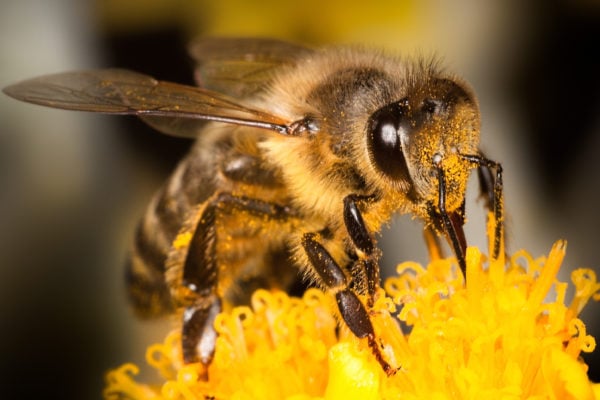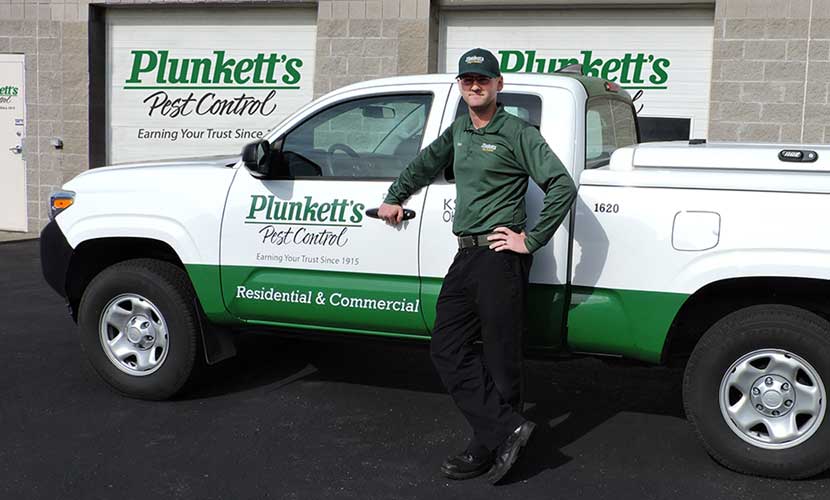Honey Bee Control

Honey bees get their common name from the sweet amber syrup they make from flower nectar and use as food. Honey bees not only provide honey and wax, but are also incredibly important pollinators. They are also responsible for a large share of insect stings, although many stings blamed on “bees” are actually inflicted by yellowjacket wasps. Honey bees are found worldwide.
BEHAVIOR
Honey bees are social insects and live as colonies in hives, with mature colonies of 20,000 to 80,000 individuals. Adults are represented by workers which are sterile females, a queen or fertile, inseminated female, and drones (males) which come from unfertilized eggs. The entire population overwinters. There is only one egg-laying queen in the hive and she mates only once. She can lay as many as 1,500 to 2,000 eggs per day and may live as long as 5 years.
Honey bees from European stock are not aggressive and do not search for something to attack. Instead, they are defensive and will attack only whatever seems to threaten the colony. Swarms first move to a temporary site such as a tree branch. The swarm will usually remain here for about 24 to 48 hours until permanent quarters are located, and then move on. Permanent quarters may consist of a beehive, hollow tree, hollow wall, attic or some similar place that offers shelter from the weather.
CONTROL AND PREVENTION
Ignore springtime honey bee swarms resting temporarily on tree branches or call a local beekeeper to come and remove the swarm alive. Call Plunkett’s for beekeeper information and to address honey bee swarms that have already moved into your residence or building.
If bees are entering your living space from a wall, ceiling or soffit, try to locate the entry point(s) and fill or cover them from inside using duct tape or other temporary material. In a residential situation, it may be desirable to discourage foraging bees from coming around the home. This is especially true if small children or allergic people are present. Discouragement consists of removal of-, or preventing access to any sweets (e.g., beverages and sweet foods) or water which may attract them to doorways, porches, patios, decks and play areas. Nectar-bearing flowering vegetation should be located away from these same sites, as well as other areas frequented by people (like sidewalks and mailboxes). Additionally, lawns should be kept free of white clover and flowering weeds.
To learn more, check out these six interesting facts about honey bees that most people don’t already know.
APPEARANCE
The adult worker’s body is 1/2 to 5/8 inch long. Honey bees are banded with orange and brown or black, and are mostly covered with pale hairs, especially on the thorax. They are a stinging insect, which means that a barbed stinger is present.
Queen honey bees are slightly larger, about 5/8 to 3/4 inch long. The longer, more tapered abdomen extends well beyond the wing tips. The queen has a smooth stinger. Males or drones are robust, about 5/8 inch long, have large eyes and do not possess a stinger.
PROFESSIONAL CONTROL
Live removal of honey bees is the preferred method whenever possible. Therefore Plunkett’s customer care personnel will often refer open swarms of honey bees to technicians who are hobbyist beekeepers as well.
The technician will remove the swarm, involving a nominal service fee. Live removal involves 1) relocating the queen and swarm into a cardboard box for transferal to an empty hive or 2) funnel-trapping the bees out and capturing them with a decoy hive, containing a queen and a few worker bees. If honey bees cannot be extracted live and must be killed in wall or attic, one of our technicians will apply an appropriately labeled aerosol or dust insecticide into the cavity containing the hive. At some point following the treatment, the dead bees, comb, and honey must be removed or else, as the wax hive and dead insects decay, there will be a strong, foul odor as well as seepage.







